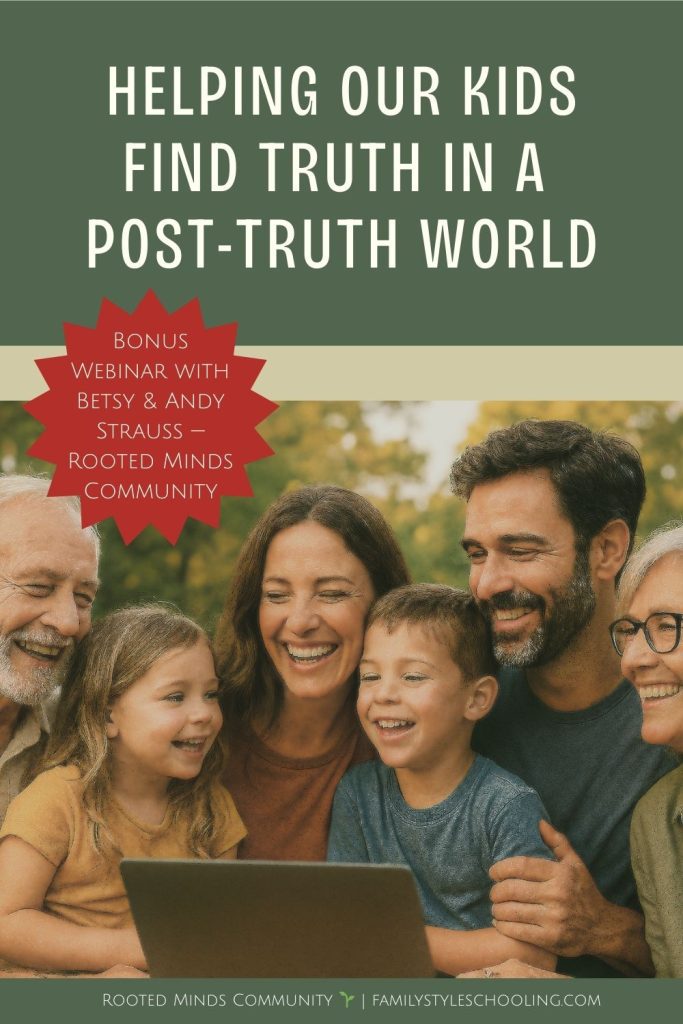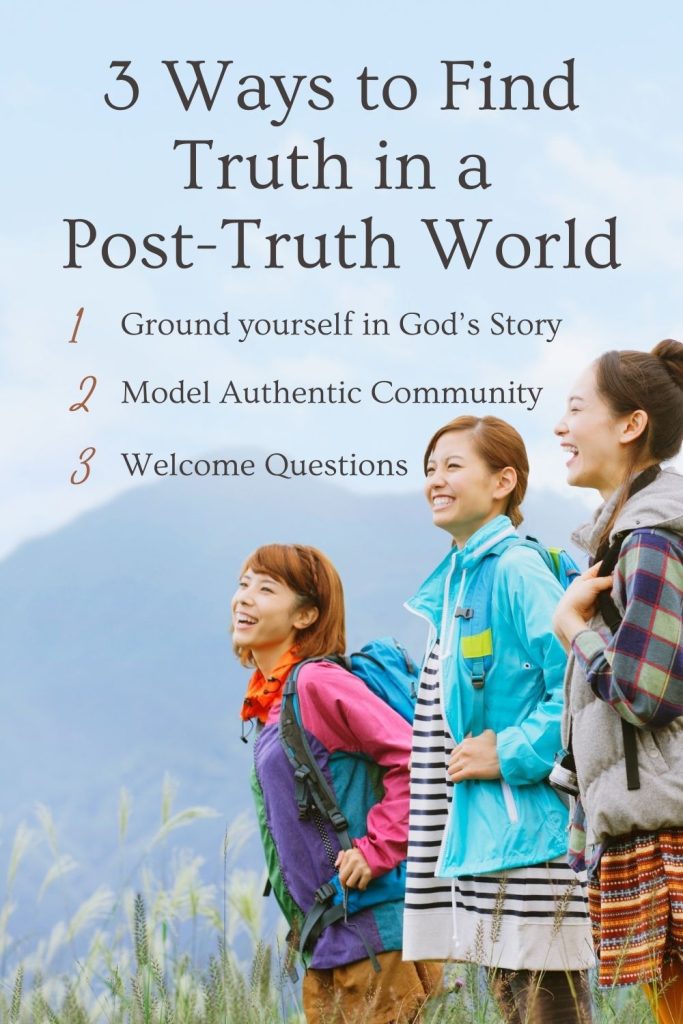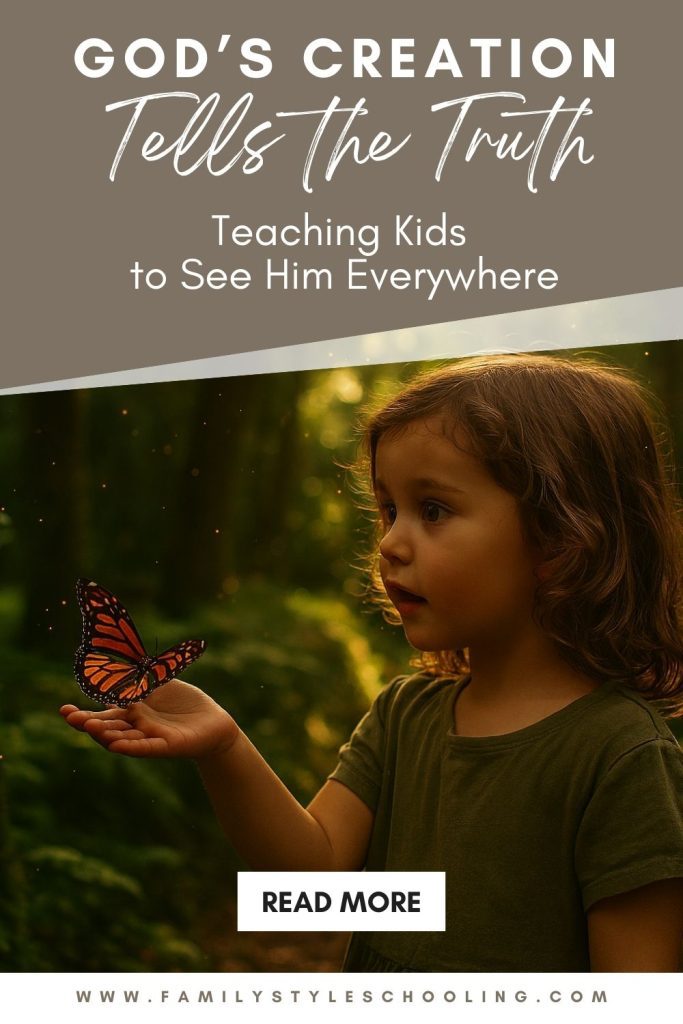Is This Real or AI? Living in a Post-Truth World
One of the first questions people ask these days when they see something online is, “Is this real—or is it AI?”
That question captures so much of what it feels like to live in 2025. We’re surrounded by information, images, and voices, but we don’t always know what (or who) to trust. Between deepfakes, misinformation, and algorithm-driven feeds, our world is saturated with competing claims to truth.
And it isn’t just about philosophy—it’s about everyday life. For younger generations (Gen Z and Alpha), the challenge of separating reality from unreality is a daily struggle. They’ve never known a world without smartphones, social media, or artificial intelligence. Their sense of what’s true is shaped socially—through belonging and identity—far more than through careful fact-checking.
The Truth Crisis: Understanding Our Digital Reality
We're living in an unprecedented moment where the line between reality and digital creation has become increasingly blurred. As someone who works with young people every day, I see firsthand how this affects their understanding of truth.
This is what scholars call the post-truth age: a cultural moment where emotions and personal beliefs often outweigh objective facts in shaping public opinion. But here’s the paradox: in the middle of all this uncertainty, there is a growing hunger for truth.
The data is fascinating. On the one hand, young adults are less likely than older generations to identify as Christians. Nearly half now claim no religious affiliation. On the other hand, surveys show that more young people are saying “yes” to Jesus—open to Him personally, even if they resist traditional church labels.
Helping Our Kids Find Truth in a Post-Truth World
For many young people, truth isn't something they actively seek—it's something they experience through belonging. Unlike previous generations who might have approached truth through systematic reasoning or authority, today's youth often absorb truth claims through immersion in communities, both online and offline. They believe something not only because it makes logical sense, but because it resonates with their group identity, aligns with their personal narrative, and feels authentic within their social circles.
This experiential approach to truth means young people are more likely to trust personal testimonies than abstract principles, more influenced by the stories their peers share than by formal arguments, and more convinced by what works in real life than by theoretical frameworks. As parents and educators, this reality can initially feel daunting—but it also opens the door to profound opportunity when we recognize that truth is transmitted through relationships and lived experience.
Here are three ways we can help our kids navigate truth in this confusing age:
1. Ground Them in God’s Story
The Christian worldview begins with revelation—God making Himself known through Scripture, creation, and most fully in Jesus. Our kids need to see that truth isn’t just an opinion but a Person who holds all of reality together. They don’t have to curate their identity online to prove their worth; their identity is already secure in Christ.
One of the best ways to help them grasp this is through the telling and retelling of biblical stories. From David standing before Goliath to Jesus calming the storm, these stories aren’t fairy tales—they are anchors in reality that reveal who God is and how He acts. The more our kids hear these stories, the more they learn to recognize His character and promises.
But truth isn’t confined to the pages of a book. God’s fingerprints are also written into creation itself. A hike in the woods, the rhythm of the seasons, the intricacy of a butterfly’s wings—all these whisper His glory. Unlike deepfakes or AI simulations, the natural world can’t be faked. It testifies daily to a Creator who is steady, generous, and real.
Teaching our kids to pay attention to both Scripture and creation helps them develop what might be called truth-sense. Just as the best way to spot a counterfeit bill is to know the real thing inside and out, the best way to recognize lies is to be deeply familiar with the truth. When they know God’s Word and see His character reflected in nature, they have a foundation that won’t crumble when everything around them feels uncertain.
2. Model Authentic Community
Our children are desperate for belonging, and if they don’t find it in the church or family, they’ll find it elsewhere. When we create spaces of honesty, forgiveness, and real presence, we show them that truth isn’t cold doctrine—it’s lived out in love.
So what does that look like in practice? It looks like hospitality—not just entertaining, but welcoming others into the real rhythms of our lives. It’s leaving room at the dinner table for the friend who shows up unplanned. It’s inviting classmates, neighbors, or church members into our homes without the pressure of perfection, so that our kids see that community doesn’t require performance—it requires presence.
Hospitality also looks like making space for stories. Around the table, in the car, or on the porch swing, we listen without rushing. We ask questions. We let kids (and adults) share their struggles without fear of being dismissed. In doing so, we model that truth doesn’t silence people—it welcomes them and helps them grow.
Community Requires Cultivation…that is maintenance
Maintaining community means practicing forgiveness and restoration. Every family knows what it’s like to clash, but the way we respond matters. When we confess our own mistakes and extend grace to one another, we show that love doesn’t end when things get messy. That kind of lived forgiveness teaches more about God’s truth than a thousand lectures.
And finally, authentic community thrives when we build rhythms of togetherness. Weekly meals, family devotions, game nights, serving together in church or neighborhood projects—all of these create habits of belonging. They weave a pattern our children can trust: “Here is where I am known. Here is where I belong.”
In a world where belonging is often measured by likes and followers, these ordinary acts of hospitality and presence stand out. They say, “You don’t have to earn a seat here. You already belong.” And that is truth embodied in love.
3. Welcome Their Questions Without Fear
Our kids aren’t just looking for quick answers—they’re looking for conversations. When they ask hard questions about science, faith, justice, or even whether God is real, we don’t need to panic. Questions aren’t threats to faith; they are invitations to deeper trust.
Don't Ask if You're Not Ready to Listen
One of the most powerful things we can do is listen first. Instead of rushing to correct or defend, we can pause, ask clarifying questions, and let them articulate what they’re really wondering. Sometimes a child’s question—“How do we know the Bible is true?”—isn’t just about evidence; it’s about whether they can trust the adults who taught them. Listening communicates respect.
We can also admit when we don’t know. Saying, “That’s a great question, and I’m still learning too,” is far better than bluffing our way through. It models humility and shows that faith is a lifelong journey of discovery, not a finished set of answers we hand down. Then, we can go on the search together—reading, exploring Scripture, or even reaching out to mentors who might bring more perspective.
Anchor Conversation in Relationship
Another way to welcome questions is to create safe rhythms of dialogue. That might look like a family tradition of “big questions night” at dinner, or a regular walk where kids know they can bring up anything without judgment. These intentional spaces build trust and communicate: You don’t have to hide your doubts. This is a safe place for honesty.
And most importantly, we need to keep anchoring questions in relationship. A child’s doubts don’t mean they’re rejecting us—or God. They’re testing whether truth holds in real life. When we stay calm, affectionate, and engaged, even in the middle of difficult conversations, we show them that love isn’t conditional.
In the end, truth isn’t fragile. It doesn’t crumble under honest questioning. By welcoming our children’s curiosity, we’re not weakening their faith—we’re strengthening it. We’re giving them the tools to discover for themselves that the gospel is big enough, strong enough, and real enough to withstand every question they will face.
AI is Not Necessarily The Bad Guy
While it’s true that AI can blur the lines of what’s real, it also has a surprising beauty when used wisely. Just as a paintbrush in the wrong hands can vandalize or inspire, AI can distort truth—or it can help us tell better stories, capture wonder, and spark creativity in our kids. I’ve written more about how we’re exploring this redemptive side of AI in our homeschool here.
Conclusion: A Generation of Truth Hunters
It’s easy to feel discouraged when we look at the challenges facing our kids. They’re growing up in a world where reality is blurred, where truth feels slippery, and where belonging is often tied to the shifting winds of online approval. But there’s another way to see it.
What if this generation—precisely because they’ve been surrounded by counterfeits—becomes the generation that longs most deeply for what is real? What if the very pressures of the post-truth age create in them a holy hunger for authenticity, integrity, and the kind of truth that can’t be manufactured or manipulated?
Truth Hunters in a Post-Truth Era
I believe God is raising up a generation of truth hunters. They’re asking harder questions, pushing against empty traditions, and searching for a coherence that only the gospel provides. They may reject shallow answers, but that’s not a threat—it’s a sign that they are ready for depth.
When we ground them in God’s story, welcome them into authentic community, and walk with them through their questions, we aren’t just protecting them from lies. We’re preparing them to be catalysts for revival. Their passion for justice, their longing for belonging, and their hunger for what is real can become the spark that calls the church back to Jesus as the way, the truth, and the life.
The post-truth era doesn’t have to be the end of truth. It might just be the beginning of a truth revival—led by a generation who knows firsthand the difference between what is fake and what is real, and who boldly clings to Christ as the One who is faithful and true.
And that gives us hope. Because our role—as parents, teachers, and mentors—isn’t to have all the answers. It’s to walk with them, point them to Jesus, and remind them again and again: this is real.
🌱 Want to Go Deeper?
Inside the Rooted Minds Community, Andy and I recorded a special webinar:
Truth in a Post-Truth Age: Helping the Next Generation Discern What’s Real (and Use AI Wisely).
In this bonus resource, we explore both sides of the story:
- How to ground our kids in God’s truth when everything feels uncertain.
- How to create spaces of belonging where truth is lived out.
- And how to wisely harness AI—not to replace thinking, but to tell better stories that point kids back to what’s real.
This resource is available exclusively for Rooted Minds members, and it’s one of the ways we’re equipping families to raise truth-seekers and storytellers in a digital age.
The Rooted Minds Community is just $15/month and includes:
- Exploring the arts together—painting with watercolor and gouache
- Learning languages—Latin, Greek, and Hebrew
- Growing through music, stories, and more
It’s a place to nurture creativity, cultivate wonder, and raise truth-seekers who are grounded in God’s Word and alive to His beauty.
👉 Learn more about Rooted Minds + join today
Betsy Strauss is an unexpected homeschooler, mother of three, who is in a relationship with a sweet man for life. She loves reading books, drinking coffee, and learning anything with her kids.






